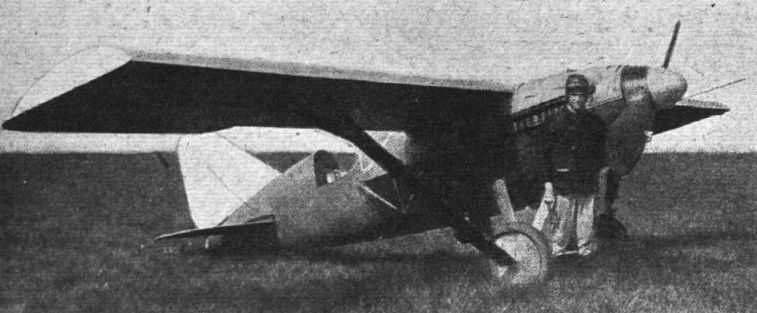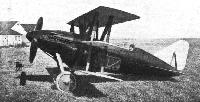
Flight, October 1922
THE 1922 PULITZER TROPHY RACE
The Curtiss Machines. - The Curtiss fleet consisted of a Navy racer, biplane, and a racing triplane, entered by the U.S. Navy, and two Army racers, entered by the U.S. Army.
The Navy Triplane is a development of the 1920 "Wild-cat" monoplane, which "grew" its extra wings, first a pair at the 1920 Gordon-Bennett race in France, and then another pair at Omaha race in 1921, as a result of the difficulty experienced in landing at speed on the aerodromes at the places mentioned above. This year's machine, however, has been practically rebuilt, but unfortunately an illustration and full particulars of this machine are not available at the moment. It is fitted with a Curtiss 430 h.p. C.12 geared type engine, and has the multi-spar wing construction and Curtiss-ply monocoque fuselage, as in the other models. A Curtiss flat plate radiator, mounted on the fuselage, is fitted.
Characteristics : Span (all planes), 20 ft.; length, 19 ft. 3 ins.; height, 8 ft. 6 ins.; chord (top), 3 ft. 6 ins., (others) 3 ft.; gap, 2 ft. 8 ins. (top) and 2 ft. 7 ins.; stagger, 1 ft.; angle of incidence, 0°; dihedral, 2 3/4° (lower); total area, 179-5 sq. ft.; weight empty, 1,936 lbs.; weight laden, 2,406 lbs.; loading/sq. ft., 13-4 lbs.; loading/h.p., 5-5 lbs.; speed range, 70-196 m.p.h.
- Flight, October 1922
THE 1922 PULITZER TROPHY RACE
Фотографии
-
Flight 1920-09 / Flight
The Curtlss Entry for the Gordon Bennett: The "Texas Wildcat" monoplane, for which is claimed a speed of 200 m.p.h.
-
Flight 1921-12 / Flight
The Curtiss-Cox ("Cactus Kitten") Racer on which Coombs finished second in the Pulitzer Race.
- Фотографии

